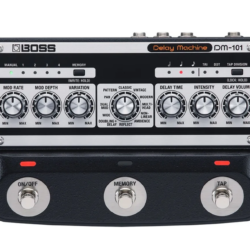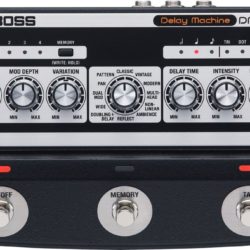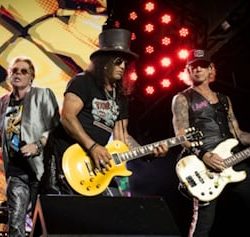Harm’s Way release new music video for ‘Undertow’
HARM’S WAY have released a new music video! The new music video, for the track Undertow, is taken from the Chicago-based hardcore band’s upcoming new album, Common Suffering, which is scheduled to be…
Read more »
COREY TAYLOR Names One BEATLES Song That He Has ‘Always’ Wanted To Cover
Corey Taylor has once again criticized THE BEATLES song “All You Need Is Love”, calling it “garbage” and “so fucking saccharine”.
In an interview with the “Zach Sang Show” last month, the SLIPKNOT singer described the track as “hippie garbage” and “one of the biggest pieces of shit that I’ve ever he…
HourHouse release new music video for ‘BODYBAG MUSIK’
HOURHOUSE have released a new music video! The new music video, for the track BODYBAG MUSIK, is the brand new single from the New Orleans-based rap-metal band and follows on from their…
Read more »
Tenside announce new album ‘Come Alive Dying’
TENSIDE have announced a new album! Titled Come Alive Dying, the upcoming album from the German metalcore band is the follow-up to 2020’s Glamour & Gloom, and is scheduled to be released in…
Read more »
Boss DM-101 Review
When you see a pedal as bristling with as many controls as Boss’s new DM-101, you can usually assume it’s digital. But the DM-101 Delay Machine is a true analog, bucket-brigade delay. Its functionality just happens to be enhanced by a digital brain. This combination enables familiar conveniences, like presets and tap tempo. But clever application of digital control also makes it possible to reshape the DM-101’s voice by adding or subtracting active BBDs or routing individual BBDs and their feedback loops to different points in a stereo image. The resulting palette of possible sounds is impressive and often addictive.Echos Spanning AgesOutwardly, the DM-101 is an homage to their first analog delay, the DM-1. And Boss did a favor for vintage-oriented stompbox aesthetes by designing the Delay Machine around Boss’s beautiful 1970s enclosure shape. But the old-school styling has practical benefits, too. The functions are clearly labeled, and the knobs are spaced so you can manipulate the controls in real time much more effectively. It’s a pleasure to use on a desktop, which extends its usefulness to the realm of production, mixing, and doing double-duty with keyboards and other table-top instruments.The controls themselves are largely straightforward. There is a 3-knob section that governs delay time, repeats (called intensity here), and an echo volume or wet/dry mix. The opposite side of the unit features two knobs for modulation depth and rate, as well as a variation knob that regulates a secondary function specific to each of the DM-101’s 12 voices. The voices include six modes for mono applications and another six for use in stereo mode. The six mono voices offer a lot of variety, including a DM-2-inspired mode, another that approximates the sound of multi-head tape delays, and a modern mode that sparkles with extra high end. Players that don’t use stereo rigs—and it’s safe to say they are a majority—may be a little puzzled by the decision to dedicate half of the voices to stereo function. But they still offer different, if less complex, textures in mono that are worth exploring.“The stereo modes serve as thickening agents of a sort, adding animation and dimension on top of the extra girth provided by any two-amp setup.”The remaining controls and functions are similarly simple to navigate. The tap division control offers nine modes ranging from dotted half-note settings to eighth-note triplets. A second push button saves the four onboard presets (expandable to 127 via MIDI), while an adjacent set of lights indicates the preset number or, in multi-head mode, the pattern of selected heads.The Delay Is in the DetailsDifferences between the DM-101’s voices are easy to hear, though at first the variations may seem subtle. The classic mode offers up to 1200 ms of delay, using more of the DM-101’s eight available BBDs, which might ordinarily cause some degradation in fidelity. Here the repeats are relatively warm. Though equivalent delay times in the vintage DM-2 mode, which tops out at 300 ms and presumably uses fewer BBDs in the delay chain, do sound slightly thicker, richer, and a bit darker. The modern mode, which has a maximum of 840 ms of available delay, is much brighter, lending some of the snap and cut of a digital delay. In all three of the modes, the variation knob changes the shape of the waveforms that make up the modulation. The multi-head setting offers abundant creative vectors thanks to the many rhythmic patterns the mode generates and the compositional and riff-writing moves it provokes. Non-linear and ambience modes, meanwhile, toy with the possibilities of shorter delay times.The stereo modes work best, of course, when you give them room to breathe, meaning slow, spacious, and airy chord progressions and quick percussive stabs. Even if you don’t incorporate these techniques, though, all of the stereo modes serve as thickening agents, adding animation and dimension on top of the extra girth provided by any two-amp setup. But of the stereo modes, dual mod and pan offer the boldest stereo effects. The former generates a liquid, woozy, submarine texture that would sound fantastic recorded in stereo, while the pan sounds delectable and alive in even the most intimate spaces.The VerdictAt $499, the DM-101 is a big-ticket item. There is no doubt that the analog design lends warmth to these echoes in the same way any great BBD-based circuit does. And when you consider other analog delays with enhanced digital control, the EHX Deluxe Memory Man 1100-TT, for instance, the DM-101’s price does not seem outlandish. Whether you can make the most of the investment may depend on the extent to which you use the more unusual modes, the degree to which you utilize the stereo features, and how they fit your playing style.Boss DM-101 Delay Machine Pedal
Read more »
Boss DM-101 Review
When you see a pedal as bristling with as many controls as Boss’s new DM-101, you can usually assume it’s digital. But the DM-101 Delay Machine is a true analog, bucket-brigade delay. Its functionality just happens to be enhanced by a digital brain. This combination enables familiar conveniences, like presets and tap tempo. But clever application of digital control also makes it possible to reshape the DM-101’s voice by adding or subtracting active BBDs or routing individual BBDs and their feedback loops to different points in a stereo image. The resulting palette of possible sounds is impressive and often addictive.Echos Spanning AgesOutwardly, the DM-101 is an homage to their first analog delay, the DM-1. And Boss did a favor for vintage-oriented stompbox aesthetes by designing the Delay Machine around Boss’s beautiful 1970s enclosure shape. But the old-school styling has practical benefits, too. The functions are clearly labeled, and the knobs are spaced so you can manipulate the controls in real time much more effectively. It’s a pleasure to use on a desktop, which extends its usefulness to the realm of production, mixing, and doing double-duty with keyboards and other table-top instruments.The controls themselves are largely straightforward. There is a 3-knob section that governs delay time, repeats (called intensity here), and an echo volume or wet/dry mix. The opposite side of the unit features two knobs for modulation depth and rate, as well as a variation knob that regulates a secondary function specific to each of the DM-101’s 12 voices. The voices include six modes for mono applications and another six for use in stereo mode. The six mono voices offer a lot of variety, including a DM-2-inspired mode, another that approximates the sound of multi-head tape delays, and a modern mode that sparkles with extra high end. Players that don’t use stereo rigs—and it’s safe to say they are a majority—may be a little puzzled by the decision to dedicate half of the voices to stereo function. But they still offer different, if less complex, textures in mono that are worth exploring.“The stereo modes serve as thickening agents of a sort, adding animation and dimension on top of the extra girth provided by any two-amp setup.”The remaining controls and functions are similarly simple to navigate. The tap division control offers nine modes ranging from dotted half-note settings to eighth-note triplets. A second push button saves the four onboard presets (expandable to 127 via MIDI), while an adjacent set of lights indicates the preset number or, in multi-head mode, the pattern of selected heads.The Delay Is in the DetailsDifferences between the DM-101’s voices are easy to hear, though at first the variations may seem subtle. The classic mode offers up to 1200 ms of delay, using more of the DM-101’s eight available BBDs, which might ordinarily cause some degradation in fidelity. Here the repeats are relatively warm. Though equivalent delay times in the vintage DM-2 mode, which tops out at 300 ms and presumably uses fewer BBDs in the delay chain, do sound slightly thicker, richer, and a bit darker. The modern mode, which has a maximum of 840 ms of available delay, is much brighter, lending some of the snap and cut of a digital delay. In all three of the modes, the variation knob changes the shape of the waveforms that make up the modulation. The multi-head setting offers abundant creative vectors thanks to the many rhythmic patterns the mode generates and the compositional and riff-writing moves it provokes. Non-linear and ambience modes, meanwhile, toy with the possibilities of shorter delay times.The stereo modes work best, of course, when you give them room to breathe, meaning slow, spacious, and airy chord progressions and quick percussive stabs. Even if you don’t incorporate these techniques, though, all of the stereo modes serve as thickening agents, adding animation and dimension on top of the extra girth provided by any two-amp setup. But of the stereo modes, dual mod and pan offer the boldest stereo effects. The former generates a liquid, woozy, submarine texture that would sound fantastic recorded in stereo, while the pan sounds delectable and alive in even the most intimate spaces.The VerdictAt $499, the DM-101 is a big-ticket item. There is no doubt that the analog design lends warmth to these echoes in the same way any great BBD-based circuit does. And when you consider other analog delays with enhanced digital control, the EHX Deluxe Memory Man 1100-TT, for instance, the DM-101’s price does not seem outlandish. Whether you can make the most of the investment may depend on the extent to which you use the more unusual modes, the degree to which you utilize the stereo features, and how they fit your playing style.Boss DM-101 Delay Machine Pedal
Read more »
GUNS N’ ROSES Postpone St. Louis Concert Due To Illness
GUNS N’ ROSES have postponed their concert Saturday (September 9) in St. Louis, Missouri due to illness.
Tens of thousands of tickets were reportedly sold for the Axl Rose-fronted act’s show at Busch Stadium.
The St. Louis Cardinals have released the following statement regarding the postponement: “…

“All of the Eric Johnson signature sounds are inside this preamp and power amp”: Vertex Effects played Eric Johnson’s $400,000 Dumble rig – here’s what it sounds like
The “rarest of rare” in the Dumble line, this custom-made Manzamp preamp and Odyssey power amp are said to be among the legendary amp builder’s “weirdest and most unobtainable” builds
Read more »
ALBUM REVIEW: More Subtle Than Death – Fixation
Having formed in the darkest days of the pandemic back in 2020, momentum has slowly been bubbling under the surface for Norwegian metalcore crew FIXATION. 2020’s Global Suicide showcased enormous potential for the…
Read more »
BLACK STONE CHERRY Has ‘Gone Up Musically Another Level’ After Bassist Switch
In a new interview with Scott Itter of Dr. Music, BLACK STONE CHERRY guitarist Ben Wells spoke about the 2021 departure of bassist Jon Lawhon and addition of his replacement, Steve Jewell Jr. (ex-OTIS). He said (as transcribed by BLABBERMOUTH.NET): “Yeah, it was kind of an adjustment at first. It wa…
Read more »